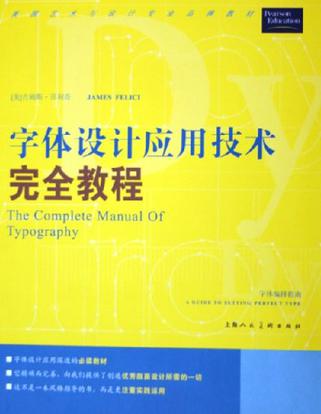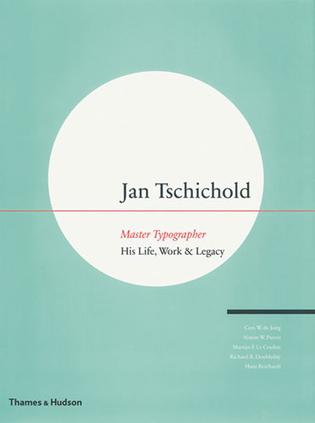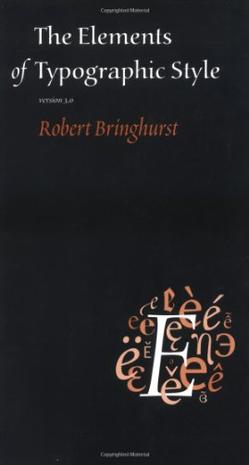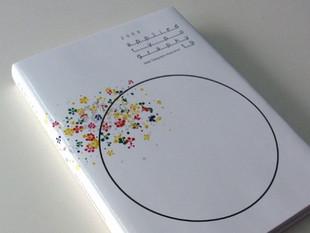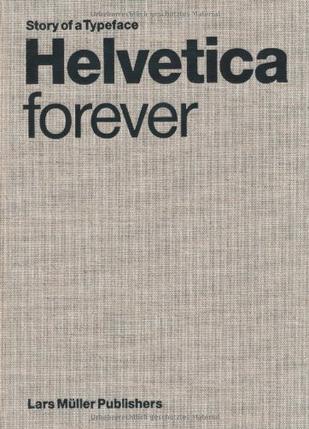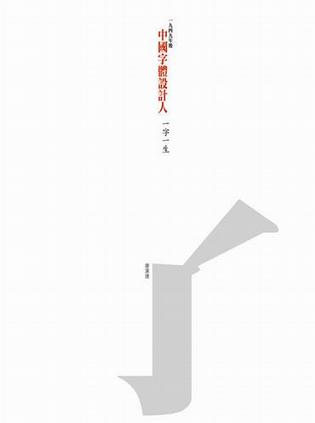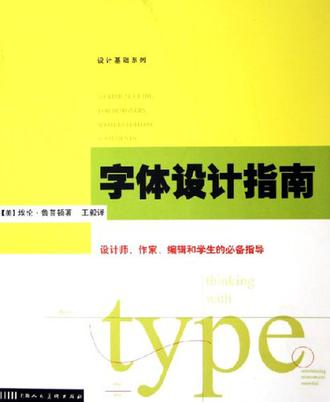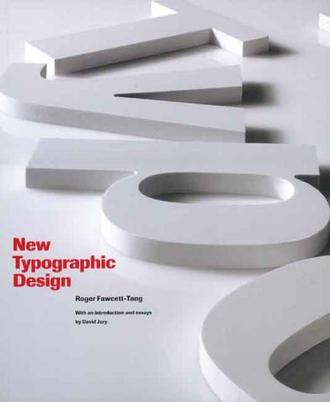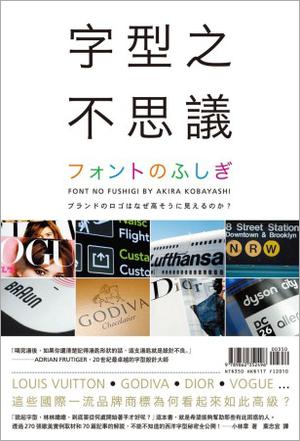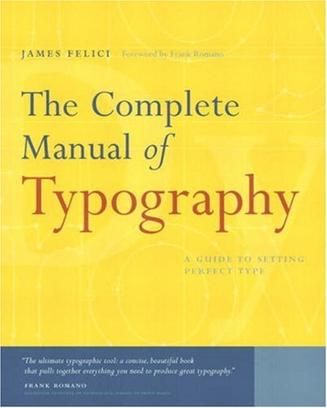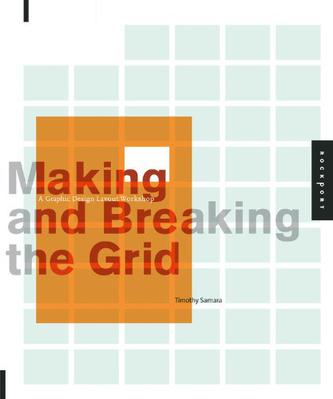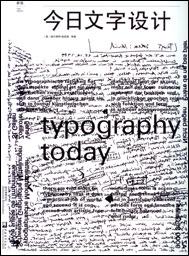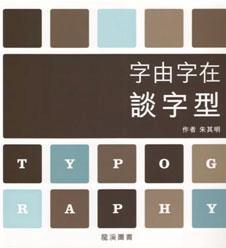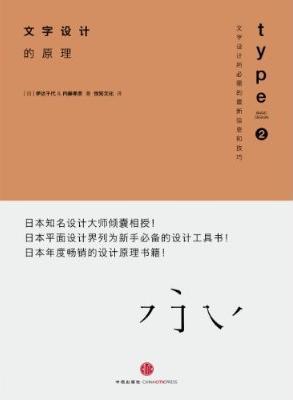欢迎来到相识电子书!
标签:typography
-
字体设计应用技术完全教程
本书是美国艺术与设计专业品牌教材,是关于字体设计应用的基础知识的基础读物,同时具有一般广泛性,从字体设计的宏观到微观,都有详实的描述。文字朴素、简洁,内容又是如此的充实和具体,它将告诉你:怎样的字体才美观?如何来应用字体并使其美观?换句话说,就是告诉你如何专业地设计编排字体。它从实践的角度解释了如何运用现代的计算机辅助工具来实现优秀的设计:排版出色的字体。 本书图文并茂,(《字体设计应用技术完全教程》对于所有从事版面设计工作的人来说都是一本必备的参考书。设计师、印刷出版专业人士等读者可以直接查找索引来获取相关问题的答案;教师和学生则可以从头至尾地阅读。将其作为一本教科书。你可以在本书中学到以下内容: 1.通过索引来体现对优秀排版基本概念的阐述和剖析,忙碌的专业人士可以将其作为快速查找的参考手册。 2.如何在操作系统上管理字库和处理损毁及缺失字库。 3.字体设置的关键。 4.处理行宽、磅数、行距、紧排和其他字体基本要素的技巧。 5.调整排版问题:松散的行、难看的不齐行边缘、寡行和孤行等的实用技巧。 6.介绍了处理分词与齐行、缩进、对齐、文本围绕和专门字符集等问题的规则。 7.如何用不适配的字体处理程序和版面程序生成出色的版面。 -
Jan Tschichold
Few have left a deeper impression on the world of typography than Jan Tschichold (1902â74), one of the most outstanding and influential designers of the 20th century. Not only was he was a master in his field, but he wrote a number of highly influential books and became instrumental in promoting the modernist design strategy called the New Typography. This substantial volume covers Tschicholdâs life and career, placing the designerâs vision firmly in the rich cultural and historical context of his era. Tschichold embraced avant-garde ideas from movements such as the Bauhaus and De Stijl and made them accessible to working designers and printers, stressing clarity in communication, with form and function going hand in hand. The contributing writers discuss the designerâs major influences and the highlights of his varied career, including his seminal poster designs, his groundbreaking work with Penguin Books, and his creation of the classic typeface Sabon. Lavish illustrations â archive photographs, many published here for the first time, as well as copious examples of Tschicholdâs work â accompany the text, confirming that Tschicholdâs heritage lives on in the digital age, and proving that he is amongst the greatest typographic designers ever. -
The Elements of Typographic Style
Renowned typographer and poet Robert Bringhurst brings clarity to the art of typography with this masterful style guide. Combining the practical, theoretical, and historical, this edition is completely updated, with a thorough exploration of the newest innovations in intelligent font technology, and is a must-have for graphic artists, editors, or anyone working with the printed page using digital or traditional methods. -
日本タイポグラフィ年鑑 2009
該年鑒屬日本字體設計協會(Japan Typograhy Association)官方出版物,本期版式及裝幀由南部俊安(Toshiyasu Nanbu)設計,Graphic-sha出版發行。 關於南部俊安: 1951年出生於大阪。1969年畢業於大阪都立工藝高等學校。1988年創建“Taste”設計公司 ── 日本從事設計項目和產品設計最主要的設計公司之一。1995年獲第7屆東京字體指導獎金獎(The 7th Tokyo Typedirection in Japan),2005及2007年香港設計師協會金獎獲得者,2007年ADI設計獎年度成就獎獲得者。 -
Helvetica forever
Designed in 1957, the Helvetica font is an icon of Swiss graphic design, which was a model of sober, functional communication throughout the world in the 1950s and 60s. The balanced and neutral appearance of Helvetica forgoes a high degree of expressivity a quality for which it is both criticized and admired. This polarization has helped to gain it unparalleled notoriety. Helvetica is far and away the most widely used of all typefaces; according to a survey by the Berliner Fontshop-Archiv, it tops the list of the hundred best fonts of all time. This publication retraces Helvetica s fifty-year history, compares it to the well-known sans serif fonts of the twentieth century, and examines the phenomenon of its unparalleled spread. Numerous illustrations show a multitude of ways the font has been used in five decades from a wide variety of fields from signal design to party flyers. -
中國字體設計人:一字一生
我們每天接觸文字:報紙雜誌、廣告牌、餐單……。文字,從來就在我們生活中,只是鮮有人去細研中國文字的底蘊。「宋、仿、黑、楷」是中國第一批有系統的印刷字體。五十年代,中國需要統一和規範字體,出現了我們今天所尊稱的「字體設計人」。在電腦時代來臨之前,整個造字過程,從打手稿、修改、造鉛字、再修改、做模,全是人手工夫;他們一天才造好三至四個字。今天,雖則電腦簡化了造字的工序,但字體設計人的經驗仍需要承傳下去。本書收錄了十二位中國字體設計人的故事,作者用了超過八年時間進行訪談和資料搜集,細錄了從五十年代至今兩代字體設計人的造字故事,還有中國字的結構、美學,和欣賞。他們述說的,又豈止文字的故事,背後實在包含?生活、文化、經濟、政治和科技等。 -
字体设计指南
白纸或屏幕上的字母的组织,是设计师们最基本的挑战之一。使用什么字体?要多大?这些字母、字词和段落如何排列、间隔、安排和造型?本书是一本开创性的新作,由设计教育和评论方面的领军人物埃伦·鲁普顿撰写,那些正在学习或提高自己字体设计排列艺术的人们,本书为他们提供了清晰而重点突出的指导。书中那些富有启发的论述,与实用的示范相结合。这些示范又因直接而富有魅力的解说而灵动起来。书中撷取的那些有影响的设计师的成功之作,既展示出如何在设计系统发挥创意。又如何去超越规则。 本书由三个方面的内容构成:字母、文本和棚格,从最基本的字体到单词的组织,再到内部协调的整体,再到富有灵活性的体系。每部分都以一篇描述性的文章作为开始,谈论各种媒体之所以注重字体设计的文化原因和理论观念。每篇文章之后都有示范性的内容,它们不仅显示字体设计如何建构,而且讲解其中的理由,阐释那些字体设计的习惯和通常做法背后的实用原冈和文化原因。是设计师、作家、编辑和学生的必备指导。 -
字型之不思議
20世紀最卓越的字型設計大師ADRIAN FRUTIGER用「喝完湯後,如果你還清楚記得湯匙形狀的話,這支湯匙就是設計不良。」來比喻字型和設計之間的關係,完全融入,渾然一體,才是完美的搭配。 從街道招牌、產品商標、餐廳菜單、服裝飾品、廣告文宣、到報刊書籍,字型在我們的生活中一幕幕的演出,設計師如何運用它,一般人又怎麼欣賞它?字型是如何透過視覺感官觸發人的感受,進而影響我們的心理和行為?備受推崇的日本西洋字型第一人小林章先生原任職於寫研公司,因為對文字設計情有獨鍾,於是在一九八九年遠赴英國倫敦學習西洋書法與字體排印學,兩度獲得世界大型字體比賽首賞,二〇〇一年被招聘至德國Linotype公司擔任字體設計總監,與多位世界級字型設計大師共事,參與羅浮宮及多種國際品牌的字型設計。如今他透過270張街景實例+70篇記事解說,為我們細數各種字型與商品及設計間的動人情話。 -
The Complete Manual of Typography
[Testimonials] "The ultimate typographic tool: a concise, beautiful book that pulls together everything you need to produce great typography." --Frank Romano, RIT School of Print Media "Clear and elegant...There's no better or more useful introduction to the whole craft of typography." --Roger Black, Danilo Black, Inc. "All you've always wanted to know about type and typography but never dared to ask. Jim Felici brings together a vast amount of knowledge in this book. Must-have!" --Erik Spiekermann, author, Stop Stealing Sheep (and Find Out How Type Works) This book is about how type should look and how to make it look that way; in other words, how to set type like a professional. It releases the craft knowledge that used to reside almost exclusively in the heads of people working in type shops. The shops are gone, the technologies have changed, but the goal remains the same. This book explains in very practical terms how to use today's computerized tools to achieve that secret of good design: well-set type. Beautifully designed and richly illustrated, The Complete Manual of Typography is an essential reference for anyone who works with type. Designers, print production professionals, and corporate communications managers can go straight to the index to find focused answers to specific questions, while educators and students can read it as a textbook from cover to cover. You'll find: - History, basic concepts, and anatomy of good typography, concisely presented and indexed for quick reference by busy professionals.
- Straight-ahead instructions for how to manage fonts, handle corrupted or missing fonts, and find the characters you need.
- Clear, useful explanations of what makes good type good (and bad type bad) .
- Detailed guidance on controlling the fundamentals of type, including measure, point size, leading, kerning, and hyphenation and justification.
- Practical advice on how to fix and avoid composition problems such as loose lines, bad rags, widows and orphans.
- Hard-to-find rules for managing indents and alignments, skews, wraps, expert-set characters, and tables.
- Scores of workarounds that show how to wring good type out of uncooperative word-processing and layout programs.
-
Making and Breaking the Grid
For designers working in every medium, layout is arguable the most basic and most important element. Effective layout is essential to communication and enables the end user to not only be drawn in with an innovative design but to digest information easily. Making and Breaking the Grid is a comprehensive layout design workshop that assumes that to effectively break the rules of grid-based design one must first understand those rules and see them applied to real-world projects. Text reveals top designers' work in process and rationale. Projects with similar characteristics are linked through a simple notational system that encourages exploration and comparison of structure ideas. Also included are historical overviews that summarise the development of layout concepts, both grid-based and non-grid based, in modern design practice. -
今日文字设计
《今日文字设计》收录了15个国家88位设计师的作品,展现了现代文字设计的面貌。 主要代表人物包括利西茨基、奇希霍尔特、茨瓦特、沃尔夫冈·魏因加特、维姆·克劳威尔、杉浦康平、埃米尔·鲁杰尔、卡尔·格斯特纳和赫布·鲁巴林等。新版又收录了内维尔-布罗迪、阿普丽尔·格雷曼和安尚秀的作品。通过沃尔夫冈·魏因加特、维姆·克劳威尔、杉浦康平、弗朗哥·格里尼亚尼、约翰·凯奇和赫尔穆特 ·施密德的评论。本书回顾了20世纪文字设计的发展历程。本书还收集了埃米尔·鲁杰尔的文章《传达与形式——文字设计》。 《今日文字设计》由赫尔穆特·施密德构思、编辑和设计。本书在1980年作为日本著名设计杂志《创意》的特刊出版,接着在1981年以书籍形式由日本诚文堂新光社再版。许多年来,本书赢得了业界的广泛赞誉,现推出新的扩编版。 今日文字设计 沃尔夫冈·魏因加特 我的字体案例之形态学 沃尔夫冈·魏因加特的文字设计 维姆·克劳威尔 实验性文字设计与实验的需要 新形态,新技术 表现性文字设计探索 多样性空间的文字设计 共时性的文字设计 视觉象形的文字设计 杉浦康平 汉字与假名的二元性共振 宇宙观的文字设计 非语言的文字设计 信息性及实验性文字设计 埃米尔·鲁杰尔的文字设计 埃米尔·鲁杰尔 传达与形式——文字设计 节奏性的文字设计 功能性的文字设计 卡尔·格斯特纳的文字设计 带饰线的文字设计 威姆·克劳威尔的文字设计 连续性的文字设计 信息性的文字设计 动感的文字设计 重复性的文字设计 实验性的文字设计 绘画性的文字设计 运动感的文字设计 佛朗哥·格里尼亚尼 有关现代文字设计的评论 文字标识设计 有目的的与可发现的偶然性 操控偶发性的文字设计 约翰·凯奇 《2页,122个关于舞蹈和音乐的单词》 政治性的文字设计 看与读的文字设计 文字设计的先驱 菲利波·插马泰.马里内蒂 达达主义运动 库尔特·施维特斯 埃尔·利西茨基 扬·奇希霍尔特 拉斯洛·莫霍伊-纳吉 赫伯特·拜尔 约斯特·施密特 皮耶·茨瓦特 赫尔穆特·施密德 《今日文字设计》的今天 -
字由字在談字型
收集超過百件經典字型應用實例,淺顯易懂,將您帶入字型的世界。 字型結構剖析,更深入了解字型的奧妙。 各式字型應用方式,讓您不再為挑選字型而煩惱。 字型也是創意來源的一種,各式字型範例與字型表現型態可 激發出更多創意點子。 提升字型的編排與設計觀念,讓字型輕鬆的融入生活與工作中。 本書目錄 第一章 字型的基本認識 12 英文字型發展與演變 13 中文漢字簡介 19 數位時代 20 認識英文字體結構與字體各部位 23 認識字型的種類 31 字型粗細度 32 字體風格 33 以點作為單位(Points)與十二點活字(Picas) 34 字型在各式媒介上的應用 第二章 字體的編排與規則 38 字距 39 行幅與縮行幅 42 行距 45 定位對齊調整 54 標點符號與編排與使用 第三章 如何為你的設計案選擇字型 62 選擇好與正確的字型 66 可挑選的字型 67 網路字型 68 網路2.0的代表字型 69 具有設計感又免費的字型 第四章 中英文字型如何並用 72 如何挑選與並用中英文字體 76 中英文字體並用範例 第五章 自行編排設計常犯的錯誤 84 大寫字體要運用得當 86 誤的引號使用 87 錯誤的字型使用 91 字型不可以任意變形 92 句點或是其他標點符號後空兩格是錯誤觀念 93 不要使用字型下底線 94 文字置中的編排方式守舊古板 96 一般排版編排時常犯的錯誤 第六章 如何管理字型 100 字型管理的重要性 101 依據字型的風格來管理 102 依照字形的功能來分類 103 以專案管理的方式來分類 104 以客戶的名稱來做字型分類 105 字型管理要注意細節 第七章 字型應用實例 110 字型應用實例 字型參考 154 特殊符號對照表 156 跨平台字型 157 字型設計師與他們所設計的字型 160 常用字型字彙 -
文字设计的原理
《文字设计的原理》内容简介:在平面设计中,文字设计的重要性无需多说。各种设计作品中都要添加文字。而文字又是信息传递的重要载体,又起到了营造氛围的重要作用。作者汇集多年来的经验,运用大量实际案例,有层次的逐步展开文字设计的各个重要因素,从认识文字、文字与意象、易于阅读的文字组合、在设计中如何强调文字,以及文字在排版中的运用。教你运用文字与设计的原理,大幅提升设计作品的质量,找到文字设计的乐趣。
热门标签
下载排行榜
- 1 梦的解析:最佳译本
- 2 李鸿章全传
- 3 淡定的智慧
- 4 心理操控术
- 5 哈佛口才课
- 6 俗世奇人
- 7 日瓦戈医生
- 8 笑死你的逻辑学
- 9 历史老师没教过的历史
- 10 1分钟和陌生人成为朋友

